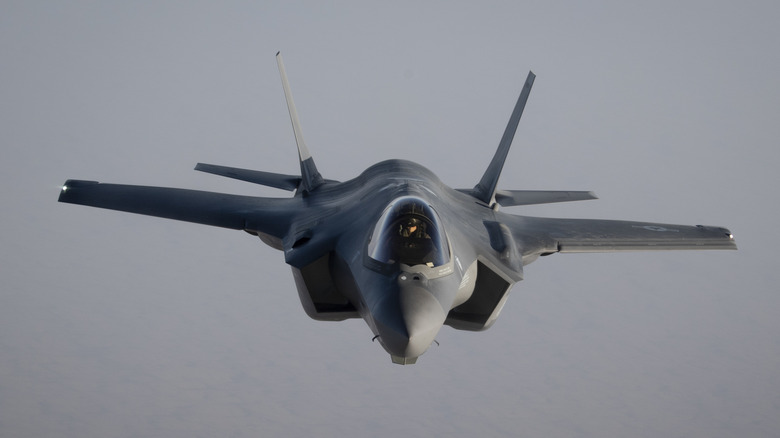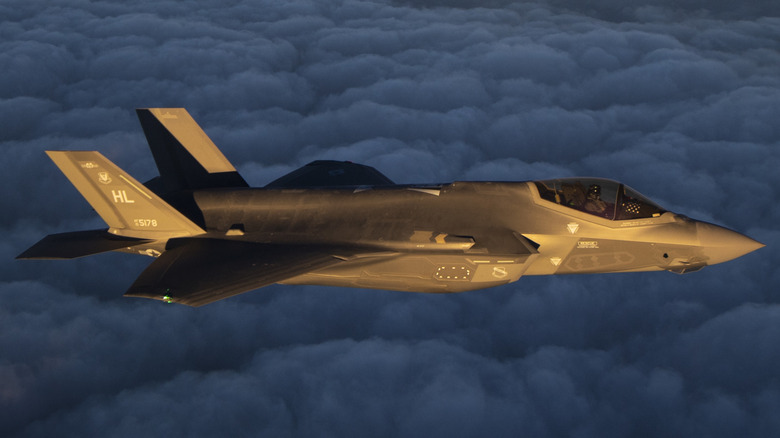How Did The F-35 Get The Nickname 'Big Penguin' ?
In the history of warfare, weapons and vehicles have often attracted creative names. Some have aliases from their fearsome legacy, while others simply got them to avoid saying massive technical designations. That's also the reason why NATO follows its own system of derivative names for fighter jets, and so do the U.S. military forces. Take, for example, the F-35 Lightning II stealth fighter, which is expected to remain operational until 2070 owing to its operational efficiency, but is nicknamed after one of the cutest animals on the planet. A penguin.
"The F-35s earned the nickname "Battle Penguin" for having wings that are relatively short compared to its length, resembling a penguin," explains a post by the Nellis Air Force Base. "And just like these incredible birds, the F-35 is sleek, agile and adaptable." Just in case you are wondering, that's not the only sobriquet for the F-35. It is also known by the name Panther among the service personnel. Interestingly, this one has a meaningful side to it.
According to the 99th Air Base Wings Public Affairs, Panther Tamer appears on the F-35 Weapons School uniform. But it's actually pilots who have given it a shorter and unofficial designation of the Panther. As far as the penguin name goes, well, it's pretty apparent if you take a top-view look at the supersonic fighter jet's main body and the relative angling, as well as the size of the wings. That similarity is no coincidence, by the way.
The shape has a purpose
A multi-role aircraft that has logged over a million flight hours, the F-35 can deliver a payload of two 2,000 lb GBU-31 JDAM guided bombs and missiles, while maintaining flight at a peak speed of Mach 1.2. It features a wingspan of 35 ft and an area of 460 ft-square, much smaller than the wingspan of F-22 Raptor (44 ft) and the F-15 Eagle (42.8 ft). That unique engineering serves a purpose.
As Lockheed Martin explains, this fighter jet carries weapons internally in a stealth configuration, transporting up to 18,000 pounds of ordinance. The unique shape also contributes to the low observability of the F-35. Technically, this ability to evade detection systems is referred to as VLO Stealth.
The fighter jet has been designed in such a way that it can minimize the aircraft's infrared "heat" signature, while the internal weapons and fuel system further mask its presence on the radar. "Specific geometric shapes and angles on the F-35 disrupt radar return," says Lockheed Martin. According to the engineering team behind it, the F-35 has the most advanced sensor suite of any fighter jet in history.
The sensing system includes Active Electronically Scanned Arrays (AESA) radar, Distributed Aperture System (DAS), Electro Optical Targeting System (EOTS) and Helmet Mounted Display System. Aside from recon and surveillance, it even allows pilots to engage with electromagnetic pulses and jam enemy systems. This sensor fusion architecture plays a crucial role in the unique shape of the F-35, one that earned it the Battle Penguin nickname.

